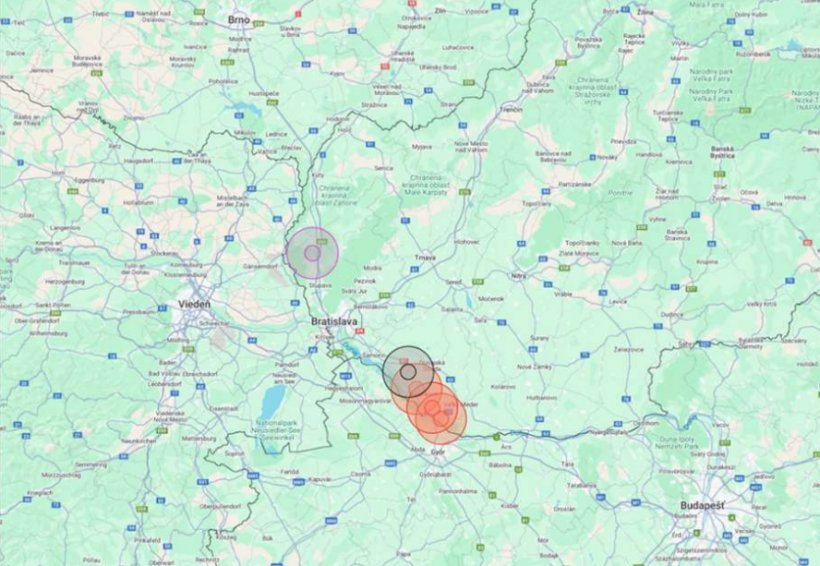Foot and mouth disease: Regionalization update at the EU level
The new Decision identifies new protection and surveillance zones and additional restricted zones in Slovakia and Hungary, as well as additional surveillance zones and restricted zones in Austria.
In view of the new outbreaks of FMD that occurred this week (the third and fourth in Hungary and the fifth in Slovakia), Implementing Decision (EU) 2025/696 has been published which amends the Annex to the previous Implementing Decision (EU) 2025/672, extending and updating the restricted, protection, and surveillance zones for FMD in Hungary, Slovakia, and Austria.
Slovakia's fifth outbreak was detected in Malacky, in the Bratislava region, more than 60 km from the fourth outbreak.
Current outbreaks of foot and mouth disease in Slovakia. Source: State Veterinary and Food Administration of the Slovak Republic.
U.S. farmers expect to plant more corn and less soybean acres
The first official, survey-based estimates of U.S. farmers’ 2025 planting intentions.
Producers surveyed across the United States intend to plant 95.3 million acres of corn in 2025, up 5% from last year, according to the Prospective Plantings report released by USDA’s National Agricultural Statistics Service (NASS). Planted acreage intentions for corn are up or unchanged in 40 of the 48 estimating states. Acreage increases of 400,000 acres or more from last year are expected in Iowa, Minnesota, Nebraska, and South Dakota. If realized, the planted area of corn in Idaho, Nevada, North Dakota, Oregon, and South Dakota will be the largest on record.
Soybean growers intend to plant 83.5 million acres in 2025, down 4% from last year. Acreage decreases from last year of 300,000 or more are expected in Illinois, Iowa, Minnesota, Nebraska, North Dakota, and South Dakota. Record high acreage is expected in New York and Ohio.
All wheat planted area for 2025 is estimated at 45.4 million acres, down 2% from 2024.
Winter wheat planted area, at 33.3 million acres, is down 2% from the previous estimate and down less than 1% from last year. Area planted to other spring wheat for 2025 is expected to total 10.0 million acres, down 6% from 2024. Durum wheat planted is expected to total 2.02 million acres for 2025, down 2% from last year.
https://www.nass.usda.gov
Foot and mouth disease: New outbreaks and activation of the vaccine bank
Hungary has confirmed two new outbreaks of FMD and Slovakia confirms its fifth, bordering Austria and near the Czech Republic.
Hungary
Today, April 2, the Hungarian National Food Chain Safety Office laboratory confirmed the presence of foot and mouth disease (FMD) virus on two farms in Gyur-Moson-Sopron county. These are cattle farms located in Darnózseli and Dunakiliti, with 1,000 and 2,500 head, respectively.
As of April 2, there are four confirmed outbreaks in Hungary.
Slovakia
According to the Spanish Ministry of Agriculture (MAPA), the Slovak veterinary authorities have confirmed the detection of a fifth outbreak of FMD in its territory, on a dairy farm with 3,526 cows, located in the district of Bratislava, bordering Austria and near the Czech Republic. The farm is outside the 10 km radius of the detected outbreaks, but within the additional restriction zone.
EU vaccine bank
In view of the current epidemiological situation, the European Commission has announced that the FMD serotype O vaccine bank has been activated to distribute 500,000 doses for the time being for use in ruminants and swine.






